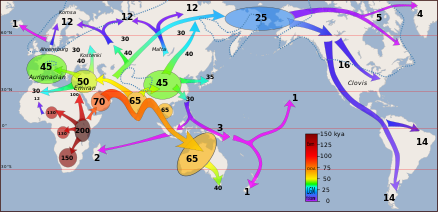

As I noted in an earlier article, the IoT is poised to become the central nervous system of the global economy. Susan Lund ( SusanLund_DC), a partner at the McKinsey Global Institute, told Mauldin, “The Internet is not a luxury for rich people to have, it’s becoming the backbone of the global economy.” The Internet of Things (IoT) will only strengthen that position. “Compared with goods and services,” he writes, “the economic effect of global data flows is downright nebulous.” Nevertheless, global data flows are increasingly important.

William Mauldin ( willmauldin) insists one reason world leaders and business executives are having a difficult time grasping globalization’s new landscape is because data flows are not as easily understood as traditional flows. Virtually every type of cross-border transaction now has a digital component.” In addition to transmitting valuable streams of information and ideas in their own right, data flows enable the movement of goods, services, finance, and people.

It is projected to increase by an additional nine times over the next five years as flows of information, searches, communication, video, transactions, and intracompany traffic continue to surge. The amount of cross-border bandwidth that is used has grown 45 times larger since 2005. The world is more connected than ever, but the nature of its connections has changed in a fundamental way. “Although this shift makes it possible for companies to reach international markets with less capital-intensive business models, it poses new risks and policy challenges as well. McKinsey & Company analysts report, “Digital flows - which were practically nonexistent just 15 years ago - now exert a larger impact on GDP growth than the centuries-old trade in goods, according to a new McKinsey Global Institute (MGI) report, Digital globalization: The new era of global flows.” They continue: A new flow - the flow of data - has recently joined. Some people add a fourth flow, ideas, to that list. For millennia, globalization has been based on three flows: the flow of capital, the flow of people, and the flow of resources. Rather, it is morphing into a more nuanced and more complex phase, with the inexorable forces that drove the previous phase still very much alive.” The morphing of globalization is a natural consequence of the blossoming of the Digital Age. For example, Algeria shows a fair amount of economic activity, but it is nearly all related to oil production, whereas France exports large amounts of goods across a wide variety of sectors.” As the attached images demonstrate, the visualizations are stunning.īoston Consulting Group analysts, Hans-Paul Bürkner, Arindam Bhattacharya, and Jorge Becerra, observe, “Globalization is not dead. The color-coding of export categories allows users to easily interpret the strength and diversity of various national economies. Joshua New ( Josh_A_New) writes, “The visualization uses data … on the $15.3 trillion in global exports in 2012 to display which countries produce various goods, as well as where these countries export their goods to. To help you see that complexity, visualization researchers at Harvard University’s Center for International Development have created an interactive data visualization called the Globe of Economic Complexity. The global economy is a complex organism that can’t be easily understood let alone controlled or manipulated. That shouldn’t come as a surprise to anyone. Shawn Donnan ( sdonnan) reports, “Last year saw the biggest collapse in the value of goods traded around the world since 2009 - when the impact of the global financial crisis was at its worst.” No one is anxious to slide once again into deep recession or full-blown depression but, world leaders are struggling to find answers. The face of globalization is changing as global trade decreases, reshoring and/or near-shoring increases, and once hot economies cool down.


 0 kommentar(er)
0 kommentar(er)
